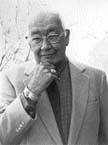
Photo courtesy of Max Randolph
A deep buzzing sounded from the loudspeakers on either side of the stage, set up on the north end of the grassy roundabout. The Mexican equivalents of secret service members were stationed no further than 10 feet apart from one another, around the perimeter of the barricade between me, standing on the inner circle, and the clean and empty street on the other side.
Like the low pitch hum of a beehive — this buzz raised group excitement and prepped everyone for the soon arriving Pope Benedict XVI. Then, as if I had forgotten to monitor my own behavior, I too was swept into the frenzy of the crowd and also found myself hanging over the barricade with outstretched arms, a camera in one hand and waving the other empty and free.
Draped across the shoulders of people much more indigenous in appearance than myself, I too caught myself in a panicked excitement about the quickly arriving Benedict. I was reminded of the crazed fans at a Rangers game, or outside of Carson Daily’s MTV newsroom in Times Square.
When this rare opportunity presented itself, I couldn’t turn down a taste of proverbial icing on the cake of my already adventure-packed spring break. Earthquakes, pyramids, Latin American pop stars just to name some of the highlights — but how often does the Pope happen to make a pit stop in my small town?
When I describe my trip, I always preface what I say with, “It was really the most culturally enriching trip south of the border that a spring-breaking gringo could have.
I was visiting and staying with the family of former Lawrence graduate Francesca Romero-Siekman in Guanajuato, a city seemingly lost in time, rich in tradition and illuminated by small taverns where locals drink shots of mescal are chased by pints of Pacifico.
The city is built in a valley, and narrow cobblestone streets snake up the hills up to the gigantic Pipila, a behemoth statue of man standing over the city. To the Eastern Mountains, a massive rock formation is said to reveal itself as the body of Jesus Christ to disciples living out of sin.
The other portion of the trip was on the beach, where I baked and read back issues of the economist while drinking Micheladas at all hours of the day — much more typical of the American college coed spring break.
The day that I was able to see the Pope, he was accepting the keys to the city from the governor of Guanajuato. The hype was built up so high that when he finally arrived, I felt a chill drop from the nape of my neck and trickle slowly down my spine until my skin was tight and I had visible goose bumps up my arms — not because of a spiritual experience, but rather the sight of flocks of people swarming after the Popemobile as he passed.
The following Sunday Benedict held a mass in the outskirts of Guanajuato for nearly 400,000 people.
For someone who grew up in a country where we scrutinize the vestiges of religion in a now-secular nation, this experience was truly unique. It’s incredible for me to imagine that this saint has a higher approval rating than Mexico’s president.
That night, the city crowded around television sets, tuning in to see the news coverage of the day’s events replay on the television screen. Understanding the implications of the Pope’s visit in a country that’s almost 83 percent Catholic is important. The city was shut down, the bars were closed, the roads barricaded, and the president had more security than Swiss Guard members disembarking from Pope’s Alitalia plane.
My thought was that there was excessive security personal, since in a country so devout, one would think that the cartels and drug wars would take a weekend long hiatus — to also tune in.
His next stop was Cuba, and I was finally able to get to the airport in the dead of night on the day of his departure to catch the 5 a.m. flight out of Guanajuato since the country took a three-day break to observe what became a national holiday.

